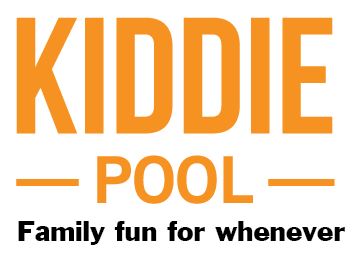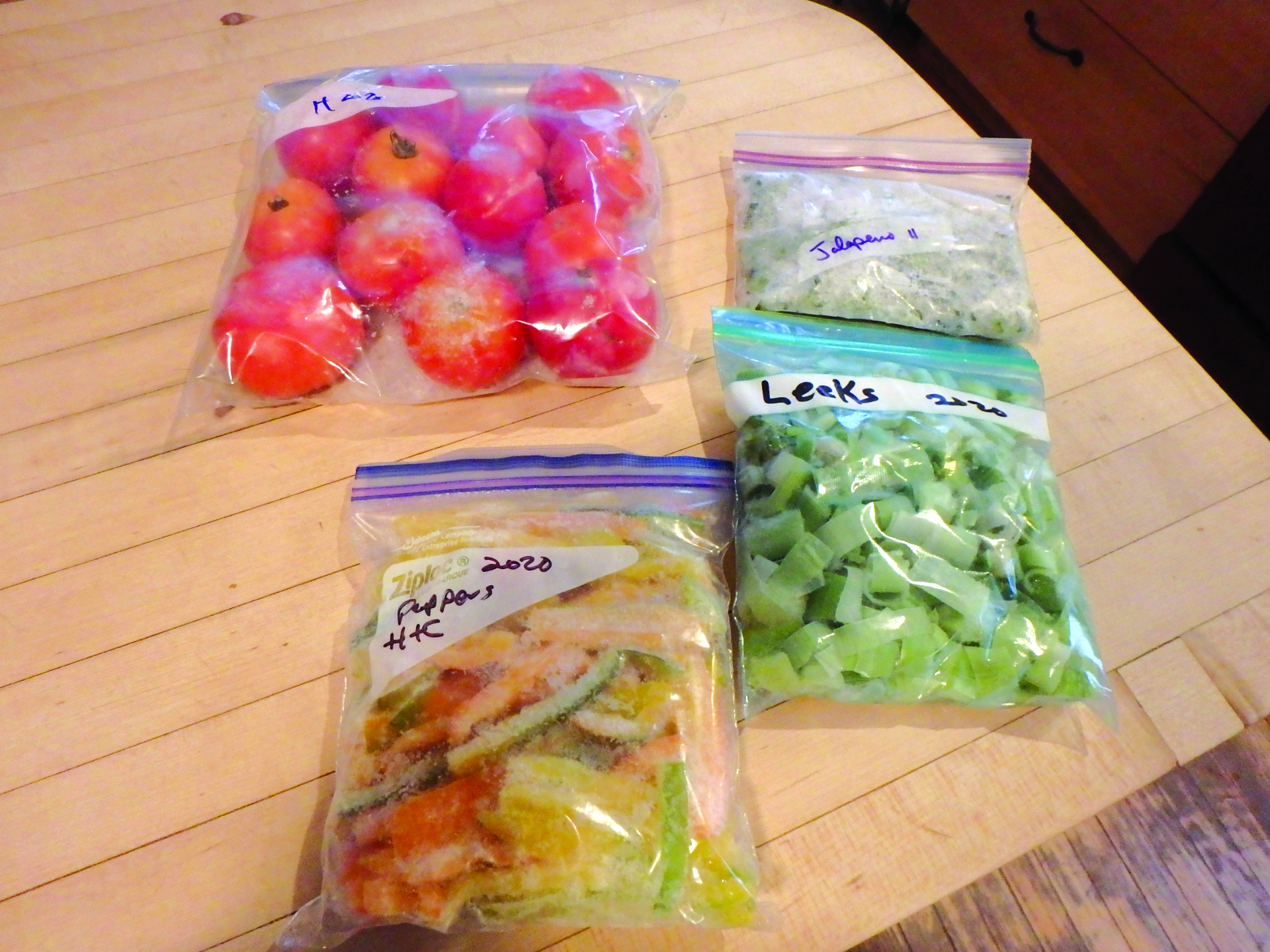Tone up, stretch and sweat at home with virtual fitness classes and local teachers
There are so many reasons to avoid going to a gym or fitness studio: lack of time, fear of embarrassing yourself, no motivation to put on real clothes and get in the car and drive — the excuses are endless. Well, thanks, Covid-19 — when fitness centers were forced to shut down last March, instructors jumped online and figured out how to offer classes virtually. Local fitness pros who teach everything from group personal training to Zumba talk about what it’s been like to transition to virtual classes and why now might be the perfect time to give at-home exercise a try.
Zumba
What it is: Zumba is a “dance fitness party” that’s often set to Latin and world music, according to the official Zumba website. There are also variations, like Zumba Step, Zumba Toning, which incorporates light weights, and Zumba Gold, designed for older exercisers.
You might like it if: You want a non-traditional cardio workout, you love upbeat music and dancing and you don’t want to have to buy any equipment.
Going virtual: When her studio in Manchester shut down on March 16, Gorica Santos, a licensed Zumba fitness instructor, spent two days figuring out a Plan B, then on March 18 went to a local park with her iPhone, created a closed Facebook group and invited her regular students to attend online. She quickly realized that Facebook had its limitations — not everyone could access it, and the platform has restrictions about music — so she moved to Zoom and continues to use that platform.
“I’ve been doing this for 12 years and I have a huge network of women who have been coming to my classes on a regular basis,” Santos said. “We see each other two or three times a week. … Not being able to do that all of a sudden was a challenge.”
The pros and cons of virtual classes: Santos said the hardest thing about moving her classes online has been the lack of personal connection to her Zumba community.
“I generally don’t like it because I’m missing the socializing part, which is a huge part for all of us,” she said.
For in-person classes, Santos’s studio is set up like a nightclub with a big dance floor.
“Everybody’s yelling and cheering — we feed off each other,” she said. “You can’t substitute [that feeling] with online classes.”
Santos said that livestreaming classes from home, where she’s alone, is nothing like the vibe in her studio.
“People come to class because of my energy, so I have to work really hard to create a similar atmosphere [virtually],” she said.
On the plus side, she has found that it’s easier for some people to attend classes online, particularly when they lack the time or motivation to get to the studio, or if they wouldn’t normally come out because of bad weather or not having child care. She also has some former students who moved away back in class virtually.
“Right now the participation is a little higher, so that’s a positive,” Santos said.
Another positive is that it’s a great opportunity for people who are new to Zumba and worry that they won’t be able to keep up or get the moves right.
“Most people are intimidated — doing something in front of other people that you’ve never done before is intimidating,” Santos said. “[This way] no one can see you.”
Give it a try: To try Zumba with Santos, visit zumbawithgorica.com, email her at [email protected] or call her at 560-6175. Her drop-in fee is $10, and she’s currently holding classes on Mondays, Wednesdays and Saturdays. She recommends that anyone who hasn’t done Zumba before give her a call prior to class so she can go over the basics. If you’re interested in other kinds of Zumba classes, such as Toning, Gold or Strong, visit zumba.com/en-US/online-classes, where you’ll find instructors from around the world offering drop-in classes, so you can pick the most convenient time and day. Prices vary and many are by donation.
My Zumba experience
My completely subjective take on a few iterations of Zumba, based on my own likes, dislikes, skills and lack thereof
Zumba: I just can’t, with the dancing. That’s why I’ve only done Zumba once. By the time I got one move down, it was on to something else, and I just felt like I was too busy trying to figure out where my feet were supposed to go and how to make my hips move like that to get a really solid workout. That said, I had always wondered if I could do it, and being able to try it in my living room, where only my kids could make fun of me, was a definite plus (though of all the Zumba-ish classes, this is the one where I felt like my living room wasn’t quite big enough, even with furniture pushed to the side). I should also add that my best friend (who has rhythm) loves Zumba, as does my mother (who does not, but has been happily Zumba-ing in her bedroom since the pandemic began).
Zumba Toning: This I can do, and I feel like I’m getting a real workout. Some of the movements are still a little complicated at times for a person devoid of dance skills, but I like that I’m working my arms, legs and sometimes core. The first time I did this, I used 5-pound weights because they were all I had. I’ve since bought 2-pound weights and I still feel the burn without worrying that I’m about to injure myself.
Strong: I first tried Strong a few years ago through my town’s rec department, and I liked it enough to keep going despite the fact that I’m not a big fan of, um, people. The music is motivating, the moves are hard but not in a complicated way — using-muscles-I-didn’t-know-I-had hard — and there are modifications if you want to make it easier or if you want to up the intensity. It’s HIIT, so your heart rate stays up while you’re toning your whole body. I like it even more virtually; some might prefer the camaraderie of in-person classes, but I’m a fan of living-room Strong, mainly because I don’t care if I look like I’m dying during ab exercises. The best part is that the moves change quickly, so if you hate one of them (looking at you, burpees), it doesn’t last long.
Pound
What it is: A full-body workout that uses Ripstix (lightly weighted drumsticks) that combines cardio and strength training with yoga and pilates-inspired moves, according to the Pound website.
You might like it if: You want to “rock out while you work out” — Pound’s official tagline
Going virtual: Jessica Hodgdon of East Kingston had been teaching Pound live at a studio in Fremont and a couple of places in Portsmouth before Covid hit, and even when those studios opened back up she didn’t feel comfortable returning. So she went virtual, first trying it out with her Zumba classes and then adding Pound in January — mostly because she missed doing it herself.
“Pound is a great workout because not only are you burning calories but it is a great way to relieve stress — and it is fun being a rock star!” she said.
Hodgdon said she hasn’t had a lot of virtual students so far but attributes it to the fact that Pound is still a new form of exercise in this area.
“A lot of people are like, ‘Pound, what is that?’” she said.
But the down time has given her more of a chance to figure out the technology, learning how to use Zoom and how to share music so that it sounds good to both her and her students. And while some instructors host their classes in kitchens or living rooms or garages and don’t change the background, Hodgdon uses a backdrop and ring lights so her students can focus on her and her movements rather than her surroundings.
The pros and cons of virtual classes: Hodgdon said that prior to Covid, both Zumba and Pound wouldn’t allow instructors to teach virtually, but it’s been such a successful addition to their programs that she thinks it will likely continue even after the pandemic. And Hodgdon is on board with that. She said she and her students benefit from the convenience of not having to drive anywhere, and pretty much anyone can do it, anywhere. She also said that it’s a way to stay connected — but on the flip side, she admits that that connection pales in comparison to being in person.
“It’s not the same,” she said. “I miss teaching live classes. I like to interact with people. I like to get right up next to somebody and do the moves with them.”
Give it a try: Hodgdon hosts 45-minute virtual Pound classes every Tuesday at 6 p.m. Drop-in classes are $8, a five-class pass is $35 and a 10-class pass is $60. (She also hosts virtual Zumba toning classes each Wednesday at 12:30 p.m. for the same price.) Register at [email protected] or find her on Facebook by searching for “Be Fresh with Jazzy Jess.” You can find other virtual Pound classes, hosted by instructors from around the country, at poundfit.com. Prices vary by instructor.
Pilates
What it is: “A fitness version of physical therapy,” according to Concord Pilates instructor Bethany Filteau-Hill.
You might like it if: You want to develop your core strength or have recurrent injuries or soreness that you want to address.
Going virtual: Though she was just finishing up her training to become a Pilates instructor last year “when the world shut down,” Filteau-Hill said, she was able to transition to virtual classes pretty quickly, both to finish her training and to teach.
“Truly, I can’t really say that it’s harder,” she said. “I think it’s just different. … Virtually, you have to use different senses [as an instructor]; it’s almost as if someone took my sight away. And you have to be more descriptive [when explaining the moves].”
For her virtual group classes Filteau-Hill only does mat work, and she makes sure her workouts are of average difficulty so everyone can do them and still be challenged. It’s a bit different than in-person classes at the studio, where they assess newcomers and give them individual plans and goals. Concord Pilates in particular is a bit different, Filteau-Hill said, as its workouts are done in circuit training style with different stations that have machines like the reformer and the trapeze.
The pros and cons of virtual classes: Filteau-Hill said that new students who have been going right to virtual love it, while students who had been working out in the studio prior to Covid haven’t been quite as enthusiastic about going virtual.
“They still love us, but they’re still kind of ‘eh’ on the virtual part,” she said. “When you’re in person, everything just had more of a flow to it.”
One of the positives, she said, is that by offering virtual classes, the New Hampshire-based studio has been able to “open up and be more than Concord Pilates — we can [teach] Pilates in California.”
Give it a try: Filteau-Hill offers virtual classes through Concord Pilates, which has a number of classes with different instructors. Call 856-7328 or visit concordpilates.com. Filteau-Hill also teaches dance through Royal Palace Dance Studio in Manchester, which has moved all of its classes online, including tap, jazz and wedding dances. Visit royalpalacedance.com.
My Pound experience
I heart Pound. The music is loud and awesome and invigorating. Like Strong, I first tried this in person during a rec class; in fact, the instructor changed the class from Strong to Pound, and I was not thrilled. Working out with weighted drumsticks? “Rocking out while you work out?” It sounded so … quirky and upbeat (read: not my typical MO). But I was hooked after the first class. You almost don’t notice that your legs are being tortured as you’re air drumming. My quads and glutes have never worked so hard. I wouldn’t say it’s a great arm workout, but your arms are definitely moving, and the more intensely you “drum,” the more you’ll feel it. Since Pound hasn’t been offered in my town for a couple years and I couldn’t find an in-person class to fit my schedule, I was thrilled to find out that it’s being offered virtually for the first time ever. I got myself some Ripstix, and in the past couple months I’ve tried classes with four instructors from various parts of the country (virtual classes are listed on the Pound website, and you can almost certainly find one that fits your schedule). Each instructor leads classes a little bit differently, so I would suggest finding one who you vibe with (I couldn’t deal with the one who kept calling us “friends,” as in, “OK, friends, stand on up!”).
Yoga
What it is: There are several kinds of yoga that vary in intensity, like gentle yoga, which focuses onstretching postures, gentle flowing movements and breathing techniques, and Vinyasa yoga, which flows from one posture to the next to increase the aerobic activity and build strength.
You might like it if: You want to stretch and tone your body and improve your balance, or you’re stressed out and want to try a new relaxation technique.
Going virtual: YogaBalance Yoga Studio in Manchester closed for two and a half months after the shutdown last March, but its virtual classes were up and running by April 1.
“It was very much a case of scrambling … and kind of coming up with scrappy solutions,” said Katherine White, director of YogaBalance.
She spent some time learning to use Zoom and researching and acquiring equipment, and now the studio is offering what it calls “YBLive” virtual classes, which are livestreamed from the studio as in-person sessions are happening. There are also on demand, pre-recorded videos that clients can sign up for and access whenever they want.
“I’m really happy that we’ve kind of found our feet with it all,” White said.
The pros and cons of virtual classes: “If you can just pop it up on your phone, the convenience of it is second to none,” White said, noting that there’s no need for child care and you don’t have that drive time. And it’s a good option for anyone who hasn’t tried yoga before.
“Because it’s private [at home], we’ve been hearing from beginners that it’s less intimidating,” she said. “I think it’s a really amazing stepping stone for people to start with.”
The downside is that there’s no teacher there to help correct postures and poses, and some people don’t have equipment, like yoga blocks, or enough space to really feel comfortable. And she said from the instructors’ perspective, it’s more difficult to manage a hybrid class, when they’re trying to lead in person while staying connected with the students online.
Still, White said, virtual classes have been a long time coming.
“[Before the pandemic] there was definitely a desire in the fitness industry for online classes,” she said. “Now it looks like they are here to stay.”
Give it a try: There are numerous YBLive virtual classes. The cost to livestream is the same as in-person, which is $18 to drop in ($13 for students and seniors 62 and older), $39 a month for new clients for one month, and $99 a month thereafter ($69 for students and seniors). On-demand videos are $3.99 each; unlimited access is $14.99 a month. Visit yogabalance.info.
My yoga experience
OK, technically speaking, I have never taken a yoga class, either in person or online. But I’ve been doing yoga in my living room to the same handful of DVDs for about 15 years, with instructors like Jillian Michaels (Yoga Meltdown and Yoga Inferno) and Bob Harper (Weight-Loss Yoga), both from The Biggest Loser. I’m more of a fan of faster-paced yoga that’s slightly less focused on breathing (yoga instructors everywhere are cringing right now) and more focused on stretching, strength and flexibility, and balance. While I can’t speak to the livestreaming class experience, I can say yoga in general has so many benefits. The older I get, the more it helps alleviate back pain and loosen up muscles that are tight from running. When I need to relax, I go for my “easier” DVDs that help me slow down a bit and really focus on slow, purposeful movements. I know I could find all of these variations of yoga through higher-quality and more effective virtual classes, and I will try one eventually — as soon as my DVD player dies.
Group personal training
What it is: Classes-based personal training that allows each member of the group to train and progress to their own abilities.
You might like it if: You want the benefits of having your own personal trainer for a fraction of the cost, or you think you’d benefit from being part of a fitness community that will push and encourage you.
Going virtual: At Get Fit NH in Concord, owner Meagan Sbat said she was “forced to become a tech person” when she had to shut down last March in order to connect with her clients. Since then, she’s fine-tuned the online offerings pretty successfully, and many of her clients are taking advantage of it.
“It’s almost like, why haven’t we been doing this the whole time,” she laughed.
Virtual programming includes a system called True Coach that delivers training emails to her clients every morning.
“We also record our live class at 5 a.m. and email it out to all our clients … and we have a livestream option, eight classes a day,” Sbat said.
All the coaches have earpieces in so clients at home can communicate directly with them, whether it’s to ask questions or ask for modifications based on the equipment they have at home.
The pros and cons of virtual classes: Sbat said she has been reaching out to her virtual clients on a regular basis to see if there’s anything they can improve with their online programming.
“Most of them reply back that they feel very connected,” she said. “We’re still engaging in front of the camera to the people at home. They miss talking to people, but the community aspect is still present.”
Several clients who have gone virtual because they work remotely, or they go out of town and want to jump on a livestream class.
“It’s definitely something that’s never going to go away,” Sbat said.
There are some benefits to in-person classes in a group personal training setting, though.
“You get to know the people around you,” Sbat said. “You want to perform better because there are other people in the room pushing themselves.”
Get Fit NH also has a brand-new facility that opened Nov. 30; located on Terrill Park Drive. It’s 10,000 square feet compared to the 4,000 square feet in their previous facility on Main Street.
Give it a try: Get Fit NH is now offering an online-only version of its group personal training program, starting at $89 a month. An in-person or hybrid membership ranges from $147 to $177 a month. Call 344.2651, email [email protected] or visit getfitnh.com.
Strength and toning
What it is: There’s a wide variety of strength and toning classes, from HIIT (High Intensity Interval Training, which combines body weight exercises for toning with that high intensity for cardio burn) to toning with weights.
You might like it if: You’re more interested in building and strengthening muscles than doing straight-up cardio.
Going virtual: When Hampshire Hills Athletic Club in Milford shut down, the instructors first moved some of their classes to Facebook.
“We loved it because we were able to still have that connection with participants,” said Sue-Ellen Maher, Group Fitness Coordinator.
Eventually they switched to Zoom, and now the club offers several virtual strengthening and toning workouts, like BodyPump, which is a barbell workout using light to moderate weights.
“People have been using milk jugs for weights,” Maher said. “They make steps for the BodyPump platform. … As members adapted, we were able to adapt and add more.”
Other strengthening and toning virtual classes include Les Mills Grit Strength, which is a 30-minutes HIIT workout; BodyFlow yoga; Pilates; and Forever Fit Strength & Balance, which uses dumbbells, balls and tubing and focuses on functional strength.
The pros and cons of virtual classes: While the facility is still open at 50 percent capacity, the addition of livestreaming classes has been well-received.
“Parents appreciate having that virtual option, and [some] of our members are just not ready to come back yet, and we want to keep them engaged,” Maher said. “They’re still able to log on and see their instructors and their friends.”
Still, she said, there is a disconnect when you’re working out online.
“[Students] have their cameras on when they first log on, they wave and say hi, and then they turn them off,” Maher said.
She said that can be a challenge because she’s not able to directly correct alignment.
“Some members could get more out of it if I saw what they were doing,” she said.
Give it a try: There are no drop-in options at Hampshire Hills; you must be a member to access any of the virtual classes, though Maher said they’re looking to add a virtual membership option for a smaller fee. For membership information and costs, visit hampshirehills.com. For similar class offerings, you can also check out your local YMCA’s website. Individual chapters are offering livestreaming classes for members, and there’s also a new organization-wide option called YMCA 360, which includes a full library of on-demand videos.







